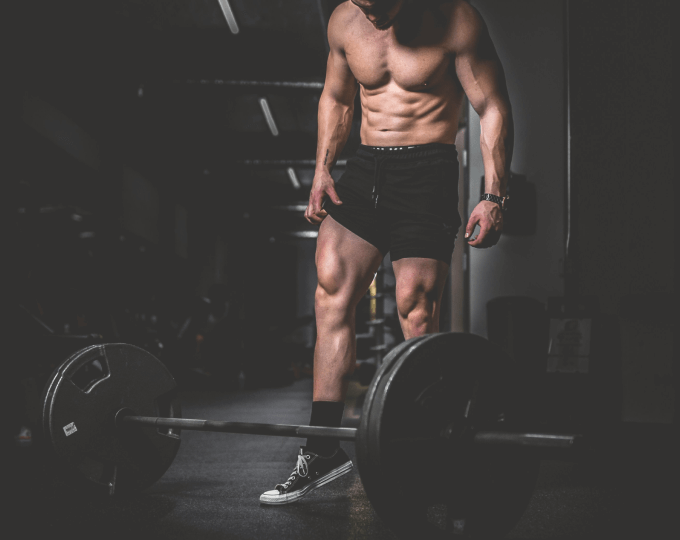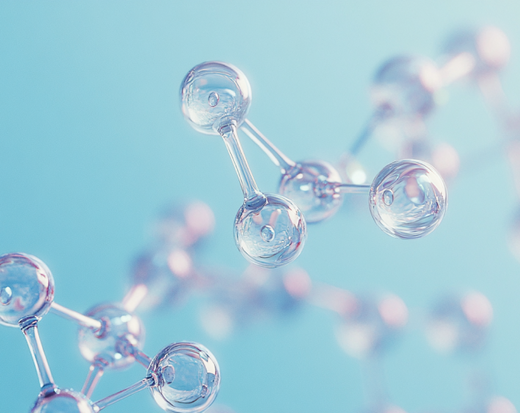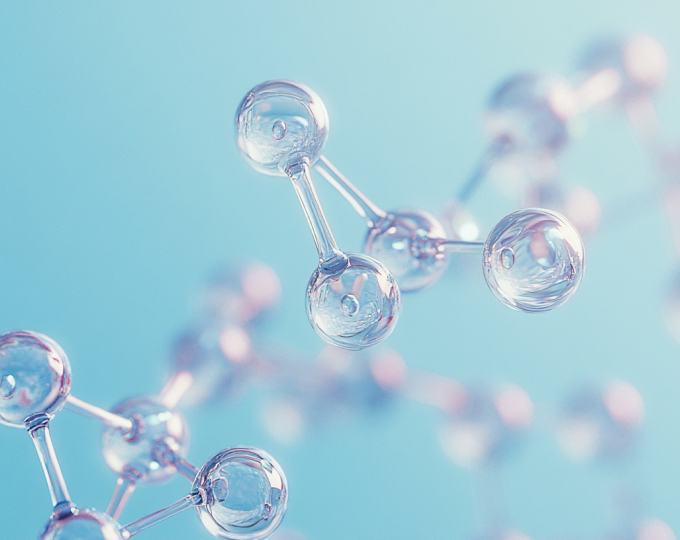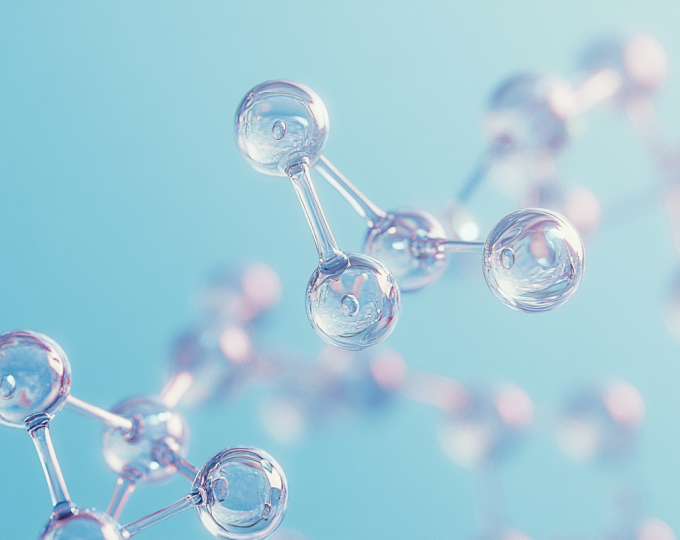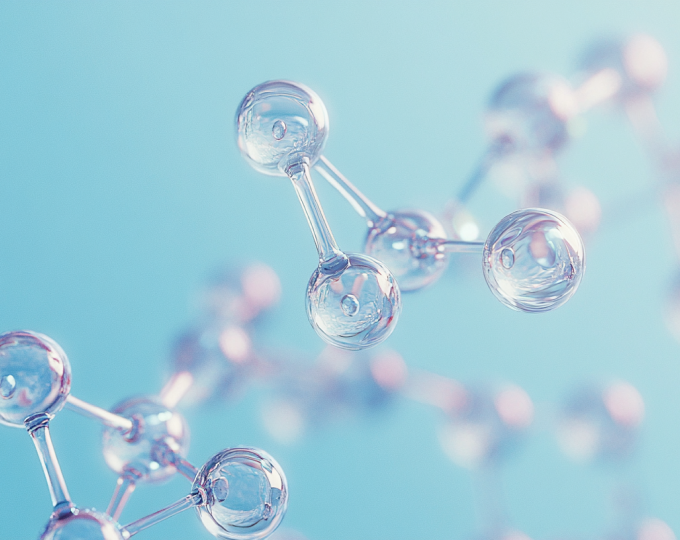Themen dieses Blogartikels:
Table of Contents
- What moves your body?
- Why do you need to strengthen tendons & co.
- How to strengthen tendons, ligaments and bones with exercise
- Exercises to try out
- Nutrition for strong tendons, ligaments & co.
- Vitamins D and C for robust bones and cartilage
- Proteins strengthen muscles & bones
- Manganese, selenium & copper strengthen the connective tissue
- Magnesium & calcium for bone function
- Which foods contain nutrients for tendons, connective tissue & joints?
- Don't forget to drink
- What you'd better do without
- Nutrient supply via food supplements: does it make sense?
- Bibliography
Almost one in three people in Germany exercise regularly for between one and three hours a week.1
The most popular sports include:
- Cycling
- Jogging
- Swimming
- Yoga
- Fitness
- Soccer
Whether in a club or privately, indoors or outdoors - men and women of all ages cite their health as the driving force behind sporting activities. However, the body only benefits fully from sport if no injuries occur.
Typical sports injuries are
- Muscle strains
- Injuries to the knee or ankle joint
- Torn ligaments
- Tendonitis
- Broken bones
We will show you measures to strengthen the structure and function of your muscles, tendons, ligaments and joints and reduce the risk of sports injuries. To do this, we first take a look behind the scenes and see how the musculoskeletal system is structured.
What moves your body?
These structures ensure that you are stable and flexible and can perform at your best in sports:
- Bones are hard structures that form the skeleton that supports you every day.
- Muscles are soft tissue that enable movement by contracting and relaxing.
- Tendons, such as the Achilles tendon, are made of connective tissue and are protected by a tendon sheath. They form the connection between muscle and bone. In order for movement to occur, they transfer muscle power to your bones.
- Joints are junctions between two or more bones. For example, they allow you to move your hand in different directions or bend your knees and elbows.
- Ligaments are elastic connections between the bones and stabilize the joints.
A distinction is made between the active musculoskeletal system and the passive supporting system: the skeletal muscles and tendons form the active part, while joints, bones and ligaments take on a supporting function.
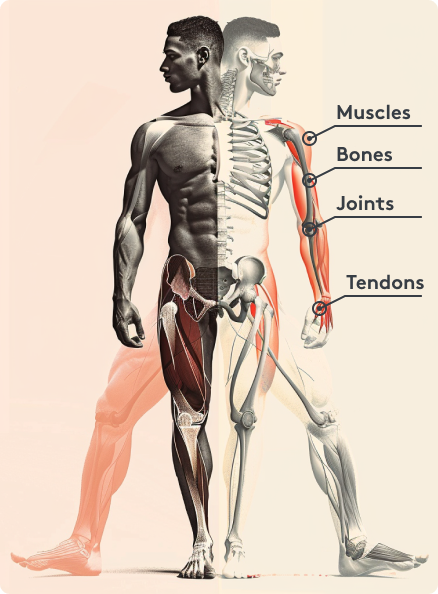

Why do you need to strengthen tendons & co.
As joints, tendons and ligaments are constantly working, they wear out over the course of a lifetime. The elasticity of tendons decreases with age. However, diseases such as osteoarthritis or overuse and underuse and injuries also make certain movements increasingly difficult.
Exercises and a balanced diet help to ensure that your body's movement elements remain functional for a long time.2 A strong musculoskeletal system helps you to focus on your performance during sport, as you don't have to worry as much about injuries.
How to strengthen tendons, ligaments and bones with exercise
Regardless of your fitness level, the following tips will help you do something good for your tendons and ligaments with exercise:
- Although everyone knows this advice, few people still take it to heart: sitting is poison for muscles, tendons etc. So incorporate as much movement as possible into your everyday life, make phone calls standing up and take the stairs.
- Include sports in your training plan that are easy on the joints, such as swimming or cycling.
- Yoga or Pilates will improve your flexibility. Strength, endurance and coordination training also help to prevent injuries.
- Invest sufficient time in warming up and stretching. A cool-down is a must after sport. Plan 10 to 15 minutes each for warming up and warming down.
- The right technique plays an important role in protecting tendons and joints. For more demanding sports in particular, it makes sense to learn how to do them correctly first.
- When it comes to sports equipment and clothing, you should focus on quality. When jogging, for example, it is worth buying shoes that are tailored to your running movements and your joints.
Exercises to try out
There are numerous exercises that you can integrate into your training to strengthen tendons and ligaments. Here are three sources of inspiration from experts:
- A research group at Berlin's Humboldt University has investigated the consequences of sporting stress on the tendon and the possibilities of targeted tendon training in competitive sport. This has resulted in the “Berlin Method”. Background information and links can be found at the Federal Institute for Sports Science.
- The State Sports Association of North Rhine-Westphalia provides exercises for the prevention of sports injuries that can also be used at home. The focus is on strength, mobilization, sensorimotor skills and coordination.
- The German Knee Society has developed the STOP-X program together with doctors, physiotherapists and sports scientists. It supports rehabilitation after a knee injury, but also offers exercises for prevention.
Nutrition for strong tendons, ligaments & co.
Alongside exercise, nutrition is the key to strong tendons, strong bones and supple ligaments. A balanced diet provides your musculoskeletal system with minerals and trace elements.
We briefly introduce you to the most important nutrients here. You can read detailed information on individual micronutrients at your leisure in our micronutrient dictionary.
Vitamins D and C for robust bones and cartilage
Vitamin D influences muscle strength and is involved in bone metabolism: Among other things, it ensures that you have sufficient calcium and phosphate available.
Vitamin C also plays an important role for your joints. Among other things, the water-soluble vitamin is involved in the formation of collagen fibers, which are found in the cartilage layer in the joints.
This elastic layer of fibers is important for the smooth functioning of the joints. Studies have shown that collagen can, for example, help to reduce pain in the knee joint and improve joint comfort.3
Proteins strengthen muscles & bones
Proteins are the basic building blocks of cells and help to maintain bone substance. They also help to build muscle.
Manganese, selenium & copper strengthen the connective tissue
Tendons and ligaments are made up of connective tissue. Manganese, selenium and copper are important to strengthen it, as these trace elements are involved in the structure of connective tissue.
As the connective tissue fibers have little blood supply, they need to be supplied with nutrients via the connective tissue fluid, which is found in the tendon sheaths, for example.
Magnesium & calcium for bone function
If you sometimes struggle with ailments such as sore muscles, you will certainly be aware of the positive properties of magnesium. This bulk element is important for normal muscle function and supports muscle relaxation.
Its natural counterpart is the bone building block calcium, which regulates muscle contraction. Almost all of your body's calcium reserves are bound up in bone mass. For this reason, this mineral should have a fixed place in your diet.
Which foods contain nutrients for tendons, connective tissue & joints?
- Many types of fruit and vegetables such as oranges, pineapple, broccoli and tomatoes contain vitamin C. Broccoli also contains calcium.
- Pulses provide magnesium and copper. Copper is also found in cashew nuts and cocoa powder.
- Green vegetables such as kale are a source of manganese.
- Selenium is found in Brazil nuts, cabbage and onions.
- Nuts provide you with protein and fill your magnesium stores.
- Meat contains protein and collagen.
- Fish also contains protein and vitamin D. In addition, natural sunlight helps your skin to produce the sun vitamin D itself.
- Dairy products and calcium-rich plant drinks provide your body with calcium.
Don't forget to drink
Sufficient water intake helps to compensate for the loss of fluid caused by perspiration. But your joints also need water. It surrounds your joints in the form of synovial fluid and acts as a lubricant that reduces friction between cartilage and tissue. Muscles are also largely made up of water. So you benefit in several ways from drinking enough when you exercise.4
Advertisement
Specifically developed for the musculoskeletal system.
With Glucosamine, Zinc & Chondroitin
Plant complex of lycopene, frankincense, rutin from buckwheat, nettle, garlic & turmeric
Supplemented with collagen & hyaluronic acid & MSM
Without fillers or flavorings
Developed with doctors & experts
Free from Gluten & Lactose

What you'd better do without
You can prevent inflammation and pain not only with exercise and nutrients, but also by reducing or completely avoiding foods that promote inflammation. In addition to alcohol and sugar, these include highly processed foods such as sausages or products that contain a lot of white flour.5
Nutrient supply via food supplements: does it make sense?
If you consume fresh food and eat a balanced diet, you will usually get all the important minerals, vitamins and nutrients from your food. However, athletes with a strict sports program or people who follow a vegetarian or vegan diet may have an increased need for nutrients.
In this case, it can be useful to support the strengthening of your tendons and joints with nutritional supplements. Even if you are recovering from a sports injury, an extra portion of nutrients can be helpful for your regeneration.
Your physiotherapist or doctor will be happy to provide you with information and advise you on which substances can get you back on track and protect you from injury in the future.
This article is based on carefully researched sources:
Bibliography & Sources
- Study by Techniker Krankenkasse and Forsa: Move, Germany!, 2022
- Ticinesi A, Lauretani F, Milani C, et al. Aging Gut Microbiota at the Cross-Road between Nutrition, Physical Frailty, and Sarcopenia: Is There a Gut-Muscle Axis?. Nutrients. 2017;9(12):1303. Published 2017 Nov 30. doi:10.3390/nu9121303
- Benito-Ruiz P, Camacho-Zambrano MM, Carrillo-Arcentales JN, et al. A randomized controlled trial on the efficacy and safety of a food ingredient, collagen hydrolysate, for improving joint comfort. Int J Food Sci Nutr. 2009;60 Suppl 2:99-113. doi:10.1080/09637480802498820
- Lorenzo I, Serra-Prat M, Yébenes JC. The Role of Water Homeostasis in Muscle Function and Frailty: A Review. Nutrients. 2019;11(8):1857. Published 2019 Aug 9. doi:10.3390/nu11081857
- Uebel U. Anti-inflammatory nutrition. Uro-News. 2021;25(9):40-43. doi:10.1007/s00092-021-4657-4








